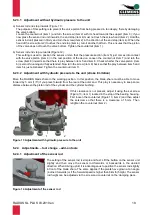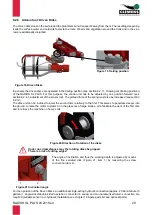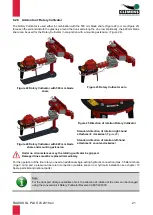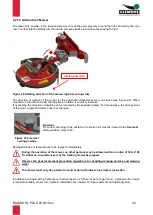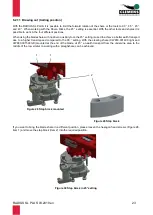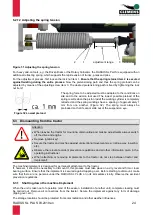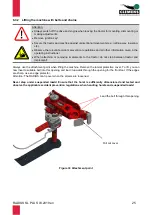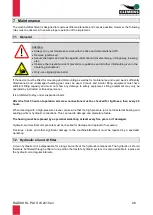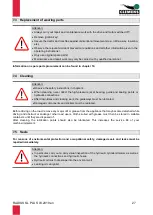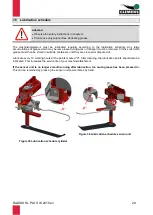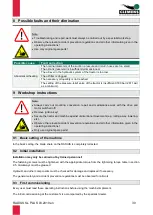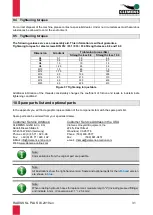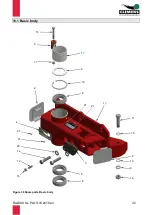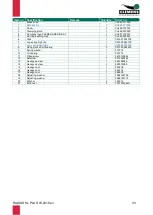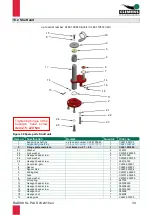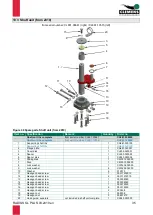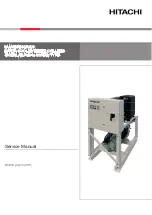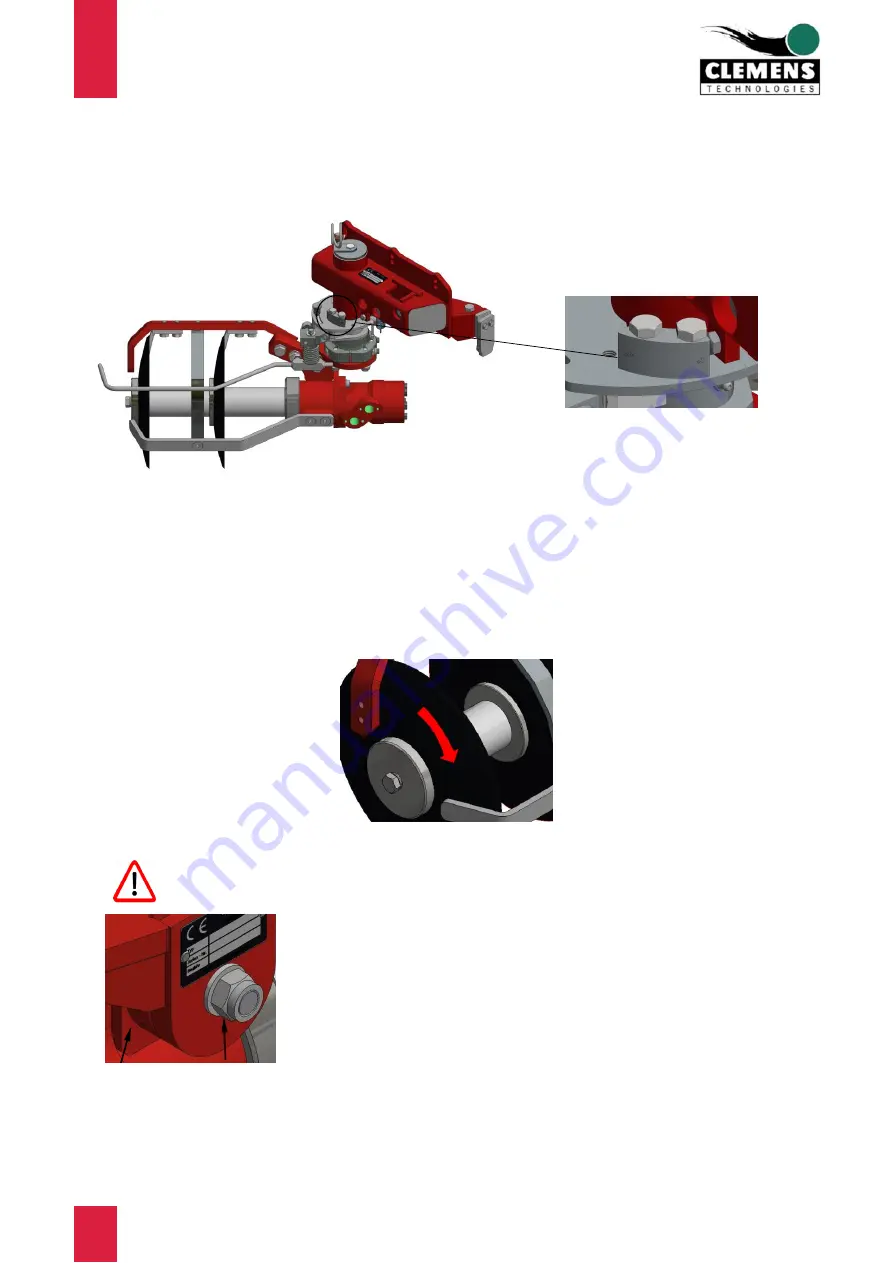
RADIUS SL PLUS 03.2019 en
20
6.2.8 Add-on tool: Driven Disks
The Driven Disks loosen the soil around the plant stems and transport it away from them. The resulting deepening
leads the surface water and nutrients faster to the roots. Weeds and vegetation around the trunk and in the vine
row are additionally disturbed.
Figure 18 Driven Disks
Figure 19 Trailing position
In general, the driven discs are operated in the trailing position (see section 6.2.11, Drawing cut (trailing position))
of the RADIUS SL PLUS. For this purpose, the control unit has to be adjusted by one position forward. (see
section 6.2.4.1
Adjustment of the sensor rod). The preload force of the spring must also be increased (see section
6.2.12).
The disk unit can be inclined to lower the second disc relatively to the first. This serves to penetrate deeper into
the ground, to raise the motor to protect it in the presence of large stones, or to facilitate the work of the first disc
and to retrieve the machine on heavy soils.
Figure 20 Direction of rotation of the disks
Under no circumstances may the rotating disks be gripped.
There is a risk of cutting edges!
Figure 21 Inclination angle
The angle of inclination and thus the working depth is adjusted by means
of the fine serrated disk (Figure 21, item 1) by loosening the screw
connection (item 2).
For the operation of the Driven Disks, an additional single-acting hydraulic connection (approx. 20 liters/minute (5
gal/min) = single-sided/double-sided operation, connected in series) and an unpressurised return connection are
required (suitable sensor rod, hydraulic installation see chapter 10 Spare parts list and optional parts).
1
2













